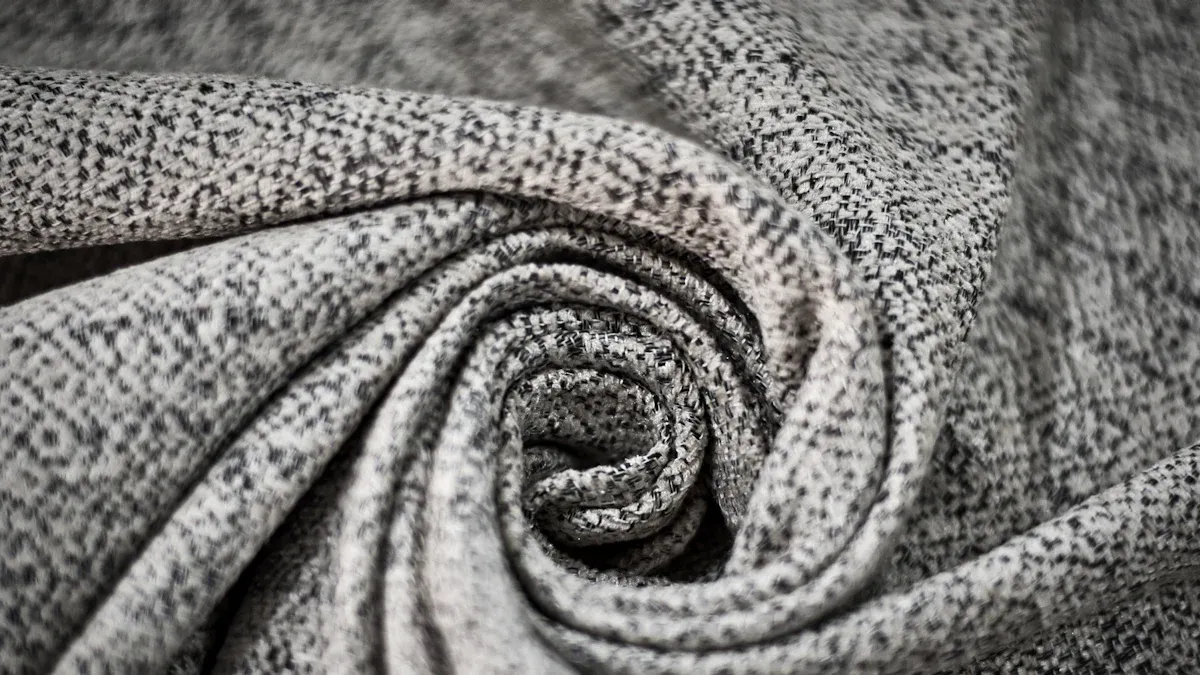
You may notice more people choosing natural linen fabric when they want an eco-friendly lifestyle. Over 60% of consumers now prefer eco-friendly materials, with linen standing out as a sustainable fabric choice. Natural linen fabric uses renewable resources and has a low environmental impact. It supports sustainability because it comes from flax, a plant that needs only rainwater to grow. You help protect the planet when you pick natural linen fabric for your clothes or home. The chart below shows how linen compares to other fabrics in environmental impact.
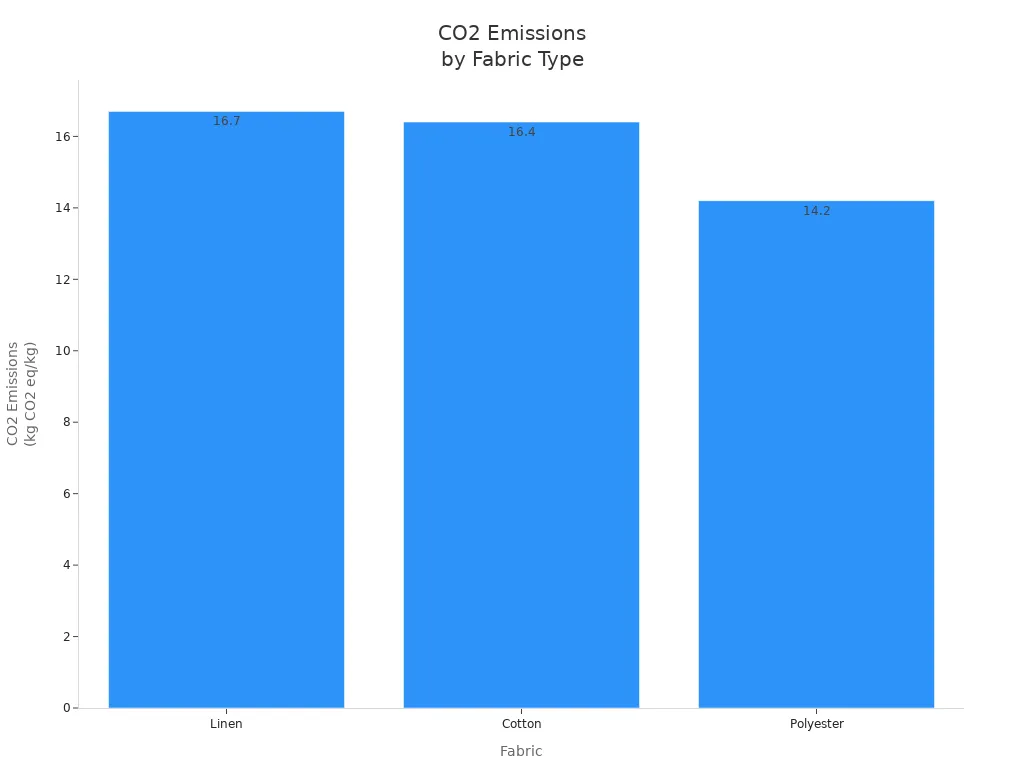
Key Takeaways
- Natural linen fabric uses less water and fewer chemicals than cotton and synthetic fabrics, making it an eco-friendly choice.
- Linen comes from flax, a renewable plant that grows with rainwater and breaks down quickly, reducing waste and pollution.
- Linen clothes and bedding last a long time, become softer with use, and need less care, saving you time and money.
- Wearing and using linen supports a sustainable lifestyle by lowering your carbon footprint and protecting the environment.
- Linen’s breathability and hypoallergenic properties make it comfortable and healthy for sensitive skin all year round.
Environmental Benefits of Natural Linen Fabric
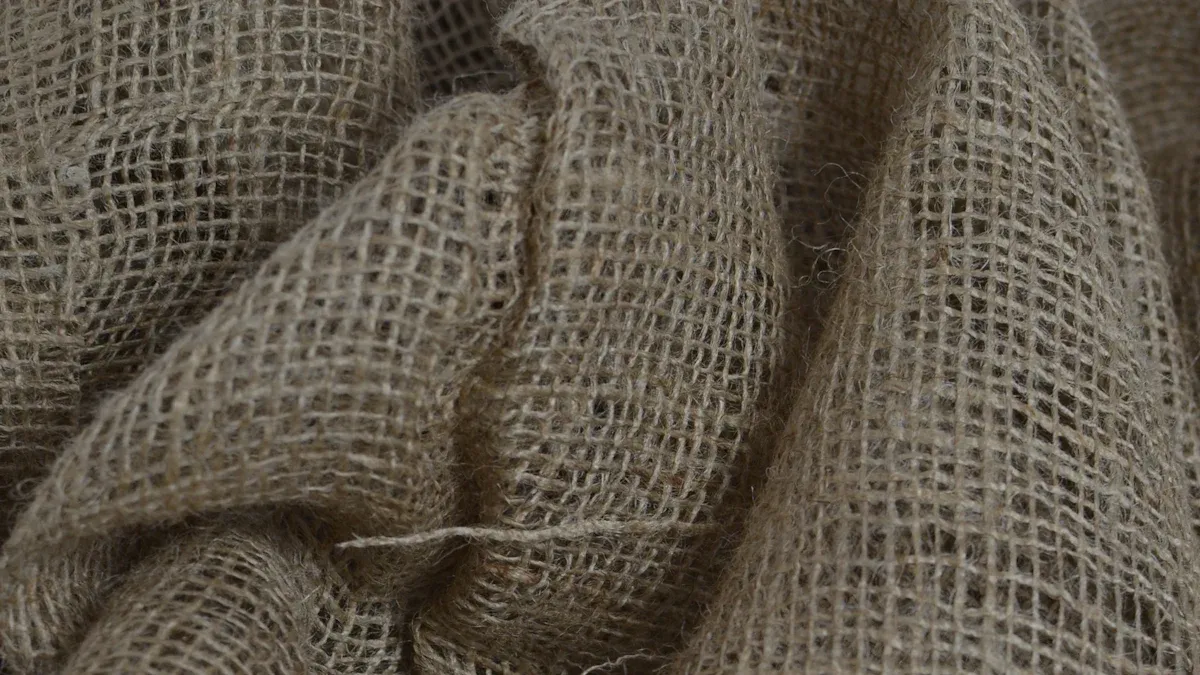
Low Water and Chemical Use in Sustainable Fabric Production
You make a big difference when you choose natural linen fabric. Flax, the plant used for linen, grows well with only rainwater. It does not need extra irrigation like cotton. This means you help save water every time you pick linen. Look at the table below to see how much water different fabrics need:
| Fabric Type | Water Required per Kilogram |
|---|---|
| Natural Linen (Flax) | Approximately 500 liters (rainwater only) |
| Cotton | 7,000–10,000 liters (needs irrigation) |
| Polyester | Data not available / unknown |
Flax grows in temperate zones and uses only the water that falls from the sky. Cotton, on the other hand, needs about 10,000 liters of water for just one kilogram of fabric. This water often comes from rivers and lakes, which puts pressure on the environment.
You also support ethical production practices when you pick linen. Linen production uses fewer chemicals than other fabrics. Most of the chemicals in linen come from the retting process, which separates the fibers from the stem. Many producers now use water retting, which is slower but better for the planet. Other fabrics often need a long list of chemicals for dyeing and finishing, such as caustic soda, dyes, and detergents. By choosing linen, you help reduce chemical pollution and support environmentally responsible manufacturing.
Renewable and Biodegradable Qualities of Linen
Natural linen fabric stands out as a sustainable fabric because it comes from flax, a renewable crop. Flax grows quickly, even in poor soil, and does not need much water or fertilizer. This makes it one of the most sustainable materials for clothing and home goods. You help protect the earth’s resources when you choose products made from natural fibres like linen.
Linen also breaks down much faster than synthetic fabrics. In a landfill, linen biodegrades in about two weeks. Compare this to polyester or nylon, which can take decades or even centuries to break down. Here is a table that shows how long different fabrics take to biodegrade:
| Fabric Type | Biodegradation Time Under Typical Landfill Conditions |
|---|---|
| Natural Linen (Flax) | Approximately 2 weeks |
| Hemp (Comparable) | Approximately 2 weeks |
| Nylon | 30–40 years |
| Lycra/Polyester | 20–200 years |
| Spandex | Hundreds of years (very slow) |
You support sustainability and reduce waste when you choose linen. Flax fibers break down much faster than organic cotton, bamboo, or synthetic fabrics. This quick biodegradation helps keep landfills from filling up with waste and supports a cleaner planet.
Reduced Carbon Footprint Compared to Other Fabrics
You lower your carbon footprint when you select sustainable textiles like linen. Producing one kilogram of linen fabric creates about 16.7 kg of CO2 equivalent. Cotton is similar in emissions but uses much more water and pesticides. Polyester has a higher carbon footprint and does not break down in nature. The chart below shows how linen compares to other fabrics in carbon emissions:
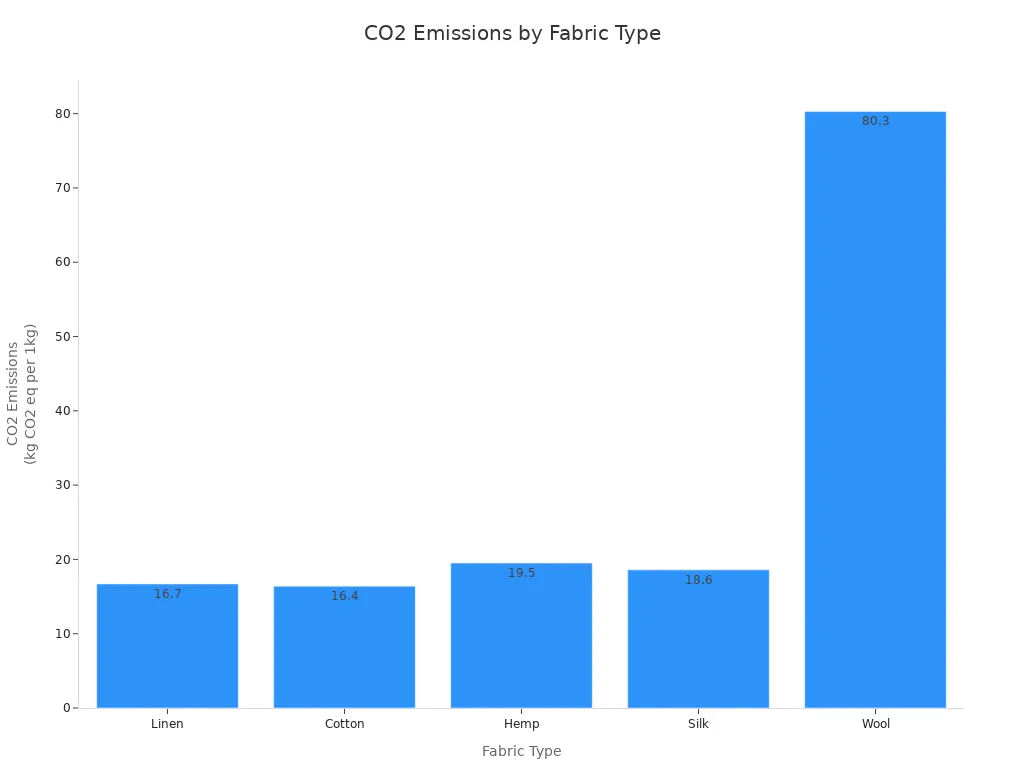
Linen’s main emissions come from manufacturing and transportation. Flax farming uses little water and few pesticides, which keeps its environmental impact low. Wool and silk have much higher emissions, mostly from animal farming. By choosing linen, you support ethical and sustainable fabric choices that help fight climate change.
Tip: When you pick natural linen fabric, you support a low environmental impact, ethical, and sustainable lifestyle. You help save water, reduce chemical use, and lower greenhouse gas emissions—all while enjoying high-quality, sustainable textiles.
Practical Advantages of Sustainable Linen Clothes
Exceptional Durability and Longevity
You want your wardrobe to last. Sustainable linen clothes give you that advantage. Linen clothing stands out for its longevity and durability. The strong natural fibers in linen help your clothes keep their shape and quality, even after many washes. Unlike cotton, which can wear out and lose softness, linen becomes more comfortable as you use it. With proper care, your sustainable linen clothes can last for decades.
Here are the most common causes of wear and tear in linen:
- Frequent washing, especially with hot water or rough cycles, can weaken fibers.
- Abrasion from daily activities wears down high-contact areas.
- Sunlight can fade colors and weaken fibers.
- Harsh chemicals, like bleach, break down the fabric.
- Storing linen in damp places can cause mildew.
If you handle your sustainable linen clothes gently and store them well, you can enjoy them for 20 to 30 years.
Tip: Rotate your linen garments and wash them with care to extend their lifespan.
Comfort, Breathability, and Hypoallergenic Properties
You will notice the difference when you wear sustainable linen clothes. Linen offers excellent breathability and comfort. The fibers allow air to move freely, so you stay cool in hot weather. Linen also absorbs moisture quickly and dries fast, which helps you feel fresh all day.
| Property | Linen Advantage |
|---|---|
| Breathability | Air circulates easily, keeping you cool and dry |
| Moisture-Wicking | Linen absorbs and releases moisture faster than cotton or synthetics |
| Hypoallergenic | Fewer allergens and dust, making it ideal for sensitive skin |
| Antibacterial | Natural resistance to bacteria and dust mites |
Sustainable linen clothes are perfect if you have allergies or sensitive skin. The fabric’s natural properties help reduce irritation and promote better sleep.
Easy Care and Low Maintenance
You save time and effort with sustainable linen clothes. Linen needs less frequent washing because it resists dirt and stains. You can often air out your linen garments or spot clean them. When you do wash them, use mild detergent and cool water. Air drying works best, but you can tumble dry on low heat if needed.
- Embrace linen’s natural wrinkles—no ironing required.
- Store your linen in cool, dry places using breathable bags.
- Address stains quickly with gentle cleaners.
Linen’s easy care routine means you spend less time on laundry and more time enjoying your clothes. This low-maintenance approach supports a sustainable lifestyle and keeps your wardrobe looking great.
Long-Term Value of Natural Linen Fabric
Improves with Age and Use
You will notice that linen fabric gets better the more you use it. When you first buy linen, it may feel a bit stiff. After several washes and regular wear, the fabric softens and becomes more comfortable. The natural fibers in linen relax over time, giving your clothes and bedding a gentle, inviting texture. If you care for your linen by washing it in cold or lukewarm water with mild detergent and letting it air dry, you help it keep its quality and appearance. Linen does not wear out quickly. Instead, it becomes more attractive and pleasant to touch as the years go by.
- Linen softens with use, which many people love.
- The fabric lasts for decades if you care for it properly.
- Linen gets stronger when wet, so it stands up to washing.
- You do not need to iron linen. Its natural wrinkles add to its charm.
- Linen keeps its look and feel as it ages, making it a favorite for bedding and clothing.
- Stains come out easily, so your linen stays fresh.
You get a fabric that improves with time, making it a smart choice for your home and wardrobe.
Reduces Waste and Supports Minimalist, Sustainable Living
When you choose linen, you help reduce waste in many ways. Linen is 100% biodegradable and recyclable, so it does not fill up landfills like synthetic fabrics. You can recycle old linen, which saves energy and resources. The production of linen uses every part of the flax plant, so almost nothing goes to waste. This means less pollution and less strain on the environment.
- Linen breaks down quickly in landfills, so it does not create long-term waste.
- Flax farming for linen uses much less water than cotton, saving a vital resource.
- Linen’s strength means you replace items less often, which cuts down on textile waste.
- Making linen uses less energy and creates less waste than many other fabrics.
- Recycling linen textiles helps keep waste out of landfills and supports a cleaner planet.
Linen fits perfectly with a sustainable lifestyle. It comes from a natural source, lasts a long time, and supports simple, timeless living. The table below shows how linen matches key values of minimalism and sustainability:
| Aspect | Evidence Summary |
|---|---|
| Natural Origin | Linen comes from flax, a hardy plant that needs little water or chemicals. |
| Environmental Benefits | Flax uses much less water than cotton. |
| Durability | Linen lasts for years, so you buy less and create less waste. |
| Biodegradability | Linen breaks down fully if you compost it, reducing landfill waste. |
| Ethical Production | Many linen products have organic or fair trade certifications. |
| Minimal Waste | All parts of the flax plant are used, so there is little production waste. |
| Timeless Appeal | Linen’s classic style fits with minimalist and sustainable living. |
Tip: By choosing linen, you help protect the environment and support a lifestyle that values quality over quantity.
Versatility and Style: Linen Bedding and Sustainable Fashion
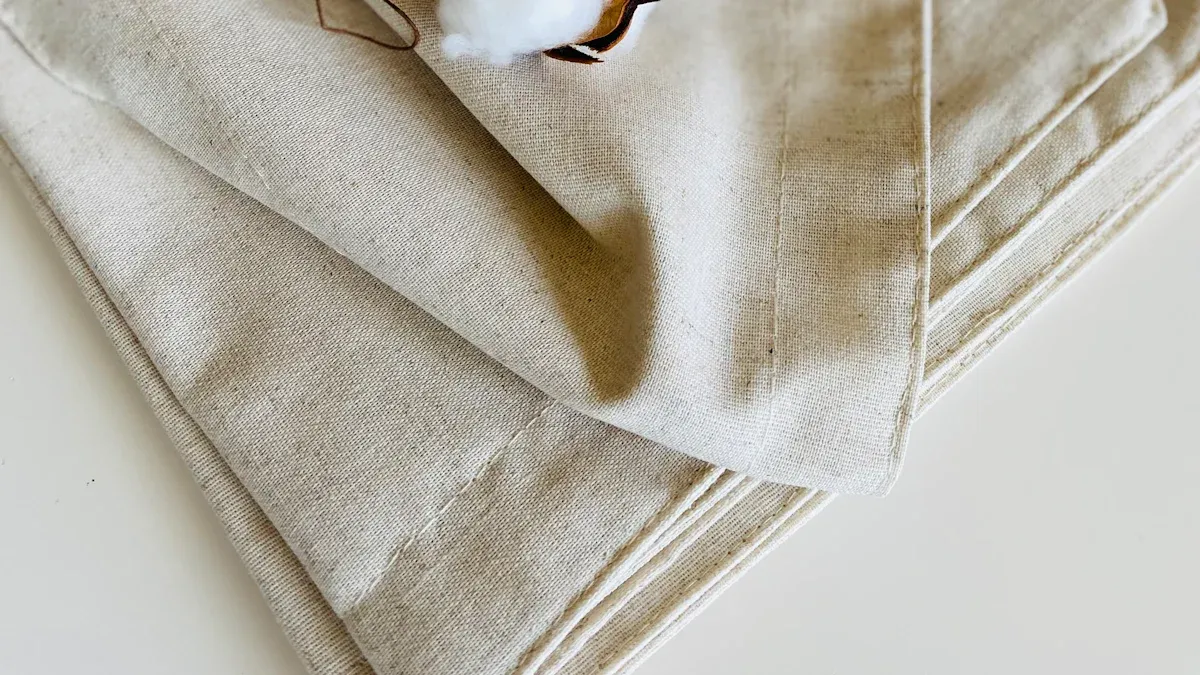
Linen Bedding for Eco-Friendly Homes
You can transform your bedroom with linen bedding. Many eco-friendly homes choose linen bedding because it supports a sustainable lifestyle. Linen bedding, especially when made from organic flax fibers, uses fewer resources than cotton bedding. Flax grows with rainwater and does not need artificial irrigation or pesticides. This helps protect local ecosystems and supports biodiversity.
People often select linen bedding for these reasons:
- Linen bedding regulates temperature, keeping you cool in summer and warm in winter.
- It wicks away moisture, so you stay dry and comfortable all night.
- Linen bedding is hypoallergenic and resists dust mites and bacteria, which helps if you have allergies.
- The fabric lasts for years, reducing waste and saving money.
- Organic linen bedding is carbon-negative, helping the environment.
You can also use linen curtains in your bedroom for a natural look. Linen curtains let in soft light and add a cozy feel. Many eco-friendly homes use linen curtains in living rooms and bedrooms. You can match your bedding with linen curtains, a linen table runner, or a linen tablecloth for a unified, sustainable style.
Sustainable Linen Clothes for Everyday Wear
You see sustainable linen clothes everywhere in sustainable fashion. These clothes use organic linen, which means no harsh chemicals or synthetic fertilizers. Sustainable linen clothes are strong, breathable, and last a long time. You can wear them for casual days, work, or even special events.
Sustainable fashion brands focus on high-quality, durable pieces. You can find eco-friendly linen clothing that softens with each wash. Many brands use certifications like GOTS or OEKO-TEX® to show their commitment to safe and ethical production. You can pair sustainable linen clothes with hats, sandals, or bags for a complete eco-friendly look. Linen wrinkles easily, but this gives your outfit a relaxed, natural style. You can care for your clothes by washing gently and air drying.
Linen curtains also play a role in sustainable fashion for your home. You can use linen curtains in your closet or dressing area to create a soft, stylish space. Add a linen table runner or linen tablecloth to your dining area for a touch of sustainable elegance.
Featured Product: Suerte Linen Collection
You can explore the Suerte Linen Collection for your next sustainable linen purchase. This collection blends the softness of cotton with the strength and breathability of linen. The fabric feels comfortable and holds up well over time. Suerte offers vibrant colors, different weights, and finishes for bedding, sustainable linen clothes, linen curtains, and more.
Here is how Suerte stands out:
| Feature | Suerte Linen Cotton Blend | Typical Market Blend |
|---|---|---|
| Weave Consistency | High consistency ensuring tight weaves | Varies, often less consistent |
| Customization Options | Extensive customization available | Limited options |
| Sample Turnaround | Fast sample service within 3-5 days | Slower, typically 7+ days |
| Cost Control | Optimized for better cost efficiency | Standard cost control |
You can use Suerte’s sustainable linen collections for bedding, linen curtains, a linen table runner, or a linen tablecloth. The collection supports eco-friendly homes and sustainable fashion. You get reliable durability, easy care, and a stylish look for every room.
Tip: Choose linen bedding and sustainable linen clothes to support eco-friendly living and enjoy comfort, durability, and timeless style.
You make a smart choice when you select natural linen fabric. Linen stands out for its low water use, full plant utilization, and biodegradable nature. You enjoy a fabric that lasts for years, keeps you comfortable, and supports an eco-friendly lifestyle. Linen’s durability and versatility fit both fashion and home needs.
Choose linen to support a cleaner planet and enjoy the benefits of sustainable, eco-friendly living.
FAQ
What makes linen fabric sustainable?
Linen comes from flax, a renewable plant. Flax grows with rainwater and needs few chemicals. Linen fabric biodegrades quickly. You help the planet when you choose linen.
How do you care for linen clothes?
Wash linen in cool water with mild detergent. Air dry or tumble dry on low. You do not need to iron linen. Embrace its natural wrinkles for a relaxed look.
Is linen fabric good for sensitive skin?
Yes! Linen feels soft and lets your skin breathe. It resists dust mites and bacteria. You can wear linen if you have allergies or sensitive skin.
Can you use linen all year round?
You can use linen in every season. Linen keeps you cool in summer and warm in winter. Its breathability and moisture-wicking properties make it comfortable all year.
Tip: Linen bedding and clothes work well in both hot and cold climates.



